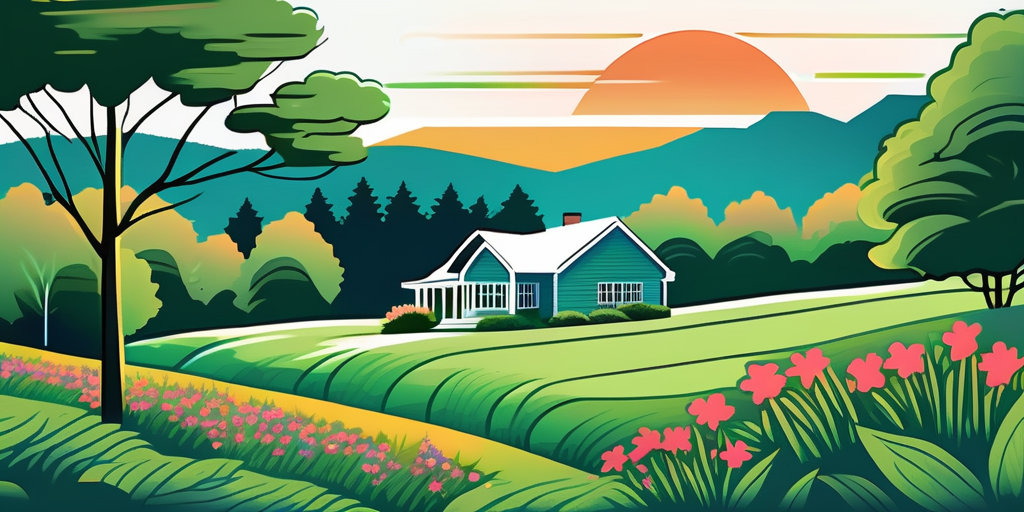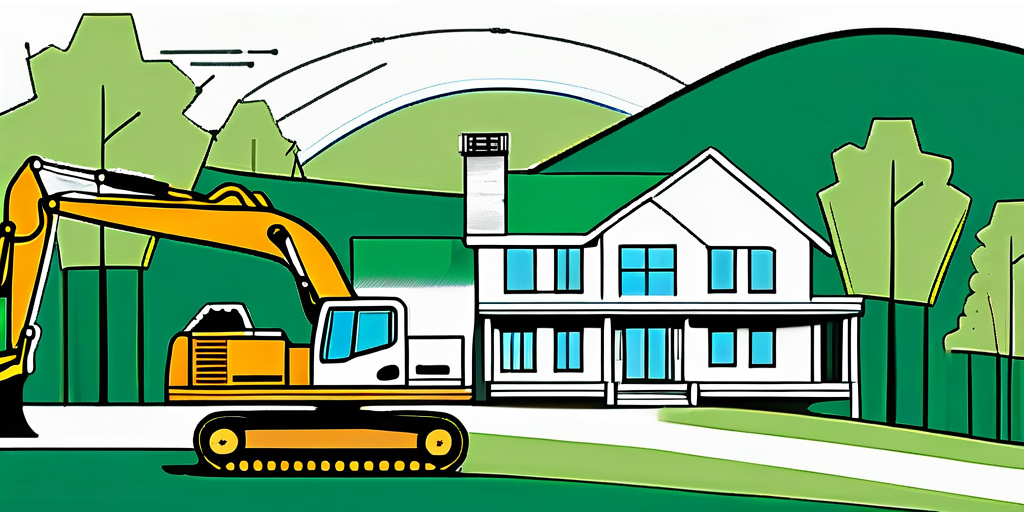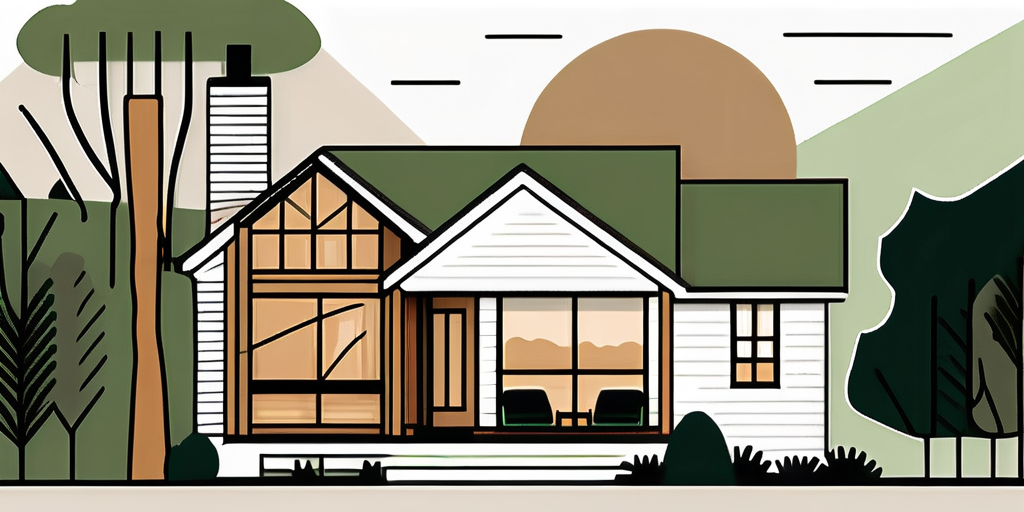
Building a home is a monumental endeavor, filled with excitement and challenges. The breathtaking landscapes and unique charm of Tennessee National elevate this experience to extraordinary heights. In this article, we’ll delve into the essential aspects of creating a stunning home that complements its surroundings and fulfills your vision.
The Tennessee National area is known for its rolling hills, lush greenery, and beautiful waterways, making it an ideal backdrop for any home. Understanding the unique aspects of this landscape is essential for ensuring that your build harmonizes with the natural beauty surrounding it.

Tennessee National boasts picturesque views that change with the seasons. From vibrant spring blooms to stunning autumn foliage, the setting provides a dynamic canvas for your home. The scenic vistas enhance not only your property's aesthetic but also your everyday experience, creating a tranquil atmosphere in which to relax and rejuvenate.
Take a moment to explore the local parks, trails, and outdoor recreation opportunities. Immersing yourself in the local environment can spark inspiration for your home design, as well as foster a genuine appreciation for the area’s natural beauty. Whether you envision a modern aesthetic or a traditional style, allow the beauty of Tennessee National to guide your decisions.
Additionally, the diverse flora and fauna of the region contribute to its charm. As you wander through the woods or along the waterways, you may encounter a variety of wildlife, from deer grazing in the meadows to a chorus of birds that fill the air with their melodies. This rich biodiversity not only enhances the visual appeal of the landscape but also creates a vibrant ecosystem that supports outdoor activities such as birdwatching, hiking, and fishing. Embracing these natural elements in your design can lead to a home that feels like a true extension of the surrounding environment.
The climate in Tennessee National is characterized by a temperate climate, with four distinct seasons. Understanding these weather patterns will play a crucial role in your home’s functionality and design. Winters can be chilly, while summers bring warmth and humidity. Thus, selecting materials and systems that suit this climate is paramount.
Consider energy-efficient designs that will keep your home comfortable year-round. Features such as ample insulation, shading elements, and energy-efficient windows can help you maintain a cozy indoor environment no matter the season. Ultimately, designing with the climate in mind not only enhances livability but also reduces ongoing costs.
Moreover, the region's weather patterns can also inspire sustainable building practices. Rainwater harvesting systems can be particularly beneficial given the seasonal rainfall, allowing you to utilize natural resources effectively. Additionally, incorporating native plants into your landscaping can minimize water usage and maintenance, creating a home that not only blends seamlessly with its surroundings but also respects the local ecosystem. By integrating these environmentally conscious strategies, you can create a residence that thrives within the unique climate of Tennessee National, ensuring comfort and sustainability for years to come.
Once you've familiarized yourself with the landscape and climate, the next step is finding the perfect plot of land. A well-chosen site sets the foundation for the home of your dreams. There are key factors to consider during this selection process that will affect your building experience.
When choosing a plot, look for essential characteristics such as elevation, soil quality, and drainage. The terrain can significantly influence your home’s design and longevity. For instance, building on a slope requires special construction considerations, while flat land may afford more straightforward construction options.
Additionally, take time to survey the vegetation and wildlife in the area. Removing trees may provide a beautiful view, but it’s essential to consider the local ecosystem. Maintaining native plants and trees can enhance your property’s charm while promoting sustainability. Furthermore, understanding the seasonal changes in the area can help you choose the right plants and landscaping features that will thrive in your chosen environment, ensuring that your home blends harmoniously with its surroundings.
The location of your plot with respect to amenities and services is crucial for daily life. Evaluate distances to grocery stores, schools, hospitals, and recreational facilities. This helps ensure convenience for you and your family.
Being close to high-quality schools and community services not only enhances your quality of life but can also impact your home’s resale value. Additionally, assess how easily you can access major roads and urban centers, as this will influence your daily commute and overall satisfaction living in Tennessee National. Consider the potential for future development in the area as well; emerging neighborhoods often see an increase in amenities and services, which can further enhance your living experience and investment potential. Engaging with local community groups or attending town meetings can provide insights into upcoming projects that could influence your decision.
With a plot secured, it’s time to bring your vision to life through thoughtful design. A well-designed home should reflect your personality while meeting your practical needs. Let’s explore how to achieve this balance.
The architectural styles prevalent in Tennessee National range from rustic cabins to contemporary designs. Investigating these styles can inspire you and help you align your dream home with local aesthetics. As you explore various architectural options, consider how they complement the natural surroundings.
If you’re drawn to traditional styles, think about incorporating elements like wooden beams or stone accents. Alternatively, modern designs with clean lines and large windows allow for a seamless connection between indoor and outdoor spaces, inviting in the natural light. Additionally, consider the impact of sustainable architecture, which not only enhances the aesthetic appeal but also promotes energy efficiency. Features such as green roofs, solar panels, and rainwater harvesting systems can be integrated into your design, making your home environmentally friendly while reducing utility costs.
While it’s essential to respect the local architecture, no home is complete without a touch of your unique style. Start by defining the primary purpose of each space. Are you creating a cozy reading nook, a bustling kitchen, or an entertainment area?
To achieve functionality, think through your lifestyle and incorporate features that will support it. Open floor plans can foster family interaction, while dedicated spaces can offer privacy when needed. Don’t hesitate to add personal touches—whether it’s colors, artwork, or furniture styles—to create a space that feels uniquely yours. Additionally, consider the flow of your home; how rooms connect and interact can significantly affect your daily life. For instance, placing the kitchen near the dining area can streamline meal preparation and make hosting guests more enjoyable. Thoughtful design choices, such as built-in storage solutions or multi-functional furniture, can also enhance both the aesthetic and practical aspects of your home, ensuring it meets your needs for years to come.
The construction journey can be overwhelming, but with proper planning and the right team, it can transform into a smooth experience. Understanding the various stages will help you confidently navigate this complex process.

Selecting skilled professionals is crucial for a successful build. Your first step is to find a reputable architect who understands your vision. They will help to sketch out the ideal layout and style while considering local building codes and zoning laws.
Beyond architects, you’ll need to assemble a construction team, including contractors, electricians, and plumbers. Don’t rush this process. Interview multiple candidates and check references to guarantee that you’re hiring qualified professionals who can smoothly execute your design. Additionally, consider looking for specialists who have experience with similar projects, as they will be more familiar with the specific challenges that may arise in your build. A well-rounded team not only brings expertise but also fosters a collaborative environment where ideas can flourish.
Construction timelines can vary widely based on the size and style of your home. Typically, you can expect the process to span several months. A detailed timeline created by your contractor can help you set realistic expectations.
During construction, regular communication with your team is vital. This ensures that any changes or unforeseen challenges are addressed promptly, allowing the build to stay on track. Embrace the journey, knowing that each phase brings you one step closer to your dream home. It's also beneficial to establish a system for tracking progress, such as weekly meetings or progress reports, which can help keep everyone accountable and informed. Remember, flexibility is key; delays can happen due to weather conditions or supply chain issues, but having a proactive mindset will help you adapt and maintain momentum throughout the project.
As the exterior of your home comes together, it’s time to focus on making the inside just as captivating. Interior design allows you to further express your personal style while ensuring the livability of your space.

The color palette you select will fundamentally shape the atmosphere of your home. While neutral tones create an open and inviting feel, bold colors can bring energy and personality to a room.
Consider drawing inspiration from the natural world around Tennessee National. Earthy greens and blues reflect the gorgeous landscapes, while warm wood tones can create a cozy interior feel. Whatever palette you choose, it’s essential to maintain consistency throughout your home for a cohesive look.
In addition to the primary colors, consider incorporating accent colors that can be introduced through textiles and accessories. For instance, a deep burgundy or a rich mustard can add a touch of sophistication and warmth, especially during the cooler months. Layering different shades of your chosen colors can also create depth and interest, making each room feel more dynamic and inviting.
Choosing furniture that complements your design scheme and aligns with your lifestyle is equally important. Opt for pieces that combine aesthetics with functionality; multi-purpose furniture can be particularly valuable in smaller spaces.
Finally, accessories and decor bring your personality to the forefront. Whether it’s family photos, artwork sourced from local artisans, or cherished travel souvenirs, these elements make your house truly feel like a home.
When selecting decor, consider the story behind each piece. For example, a handcrafted item from a Tennessee craft fair can serve as a conversation starter, while vintage finds can add character and charm to your space. Additionally, plants can breathe life into your home, providing not only beauty but also improved air quality. Incorporating greenery, such as ferns or snake plants, can enhance your interior design while connecting your living space to the lush surroundings of Tennessee.